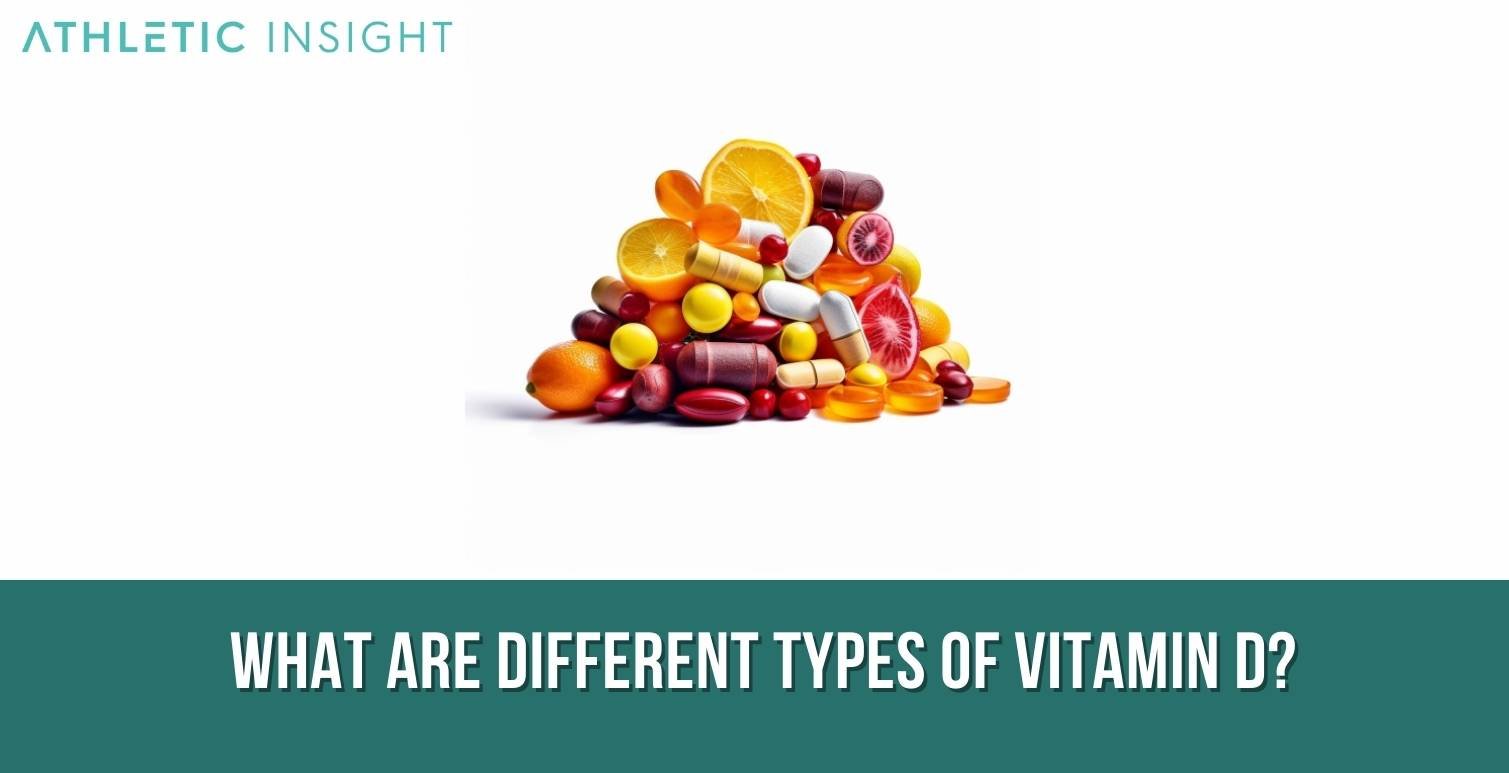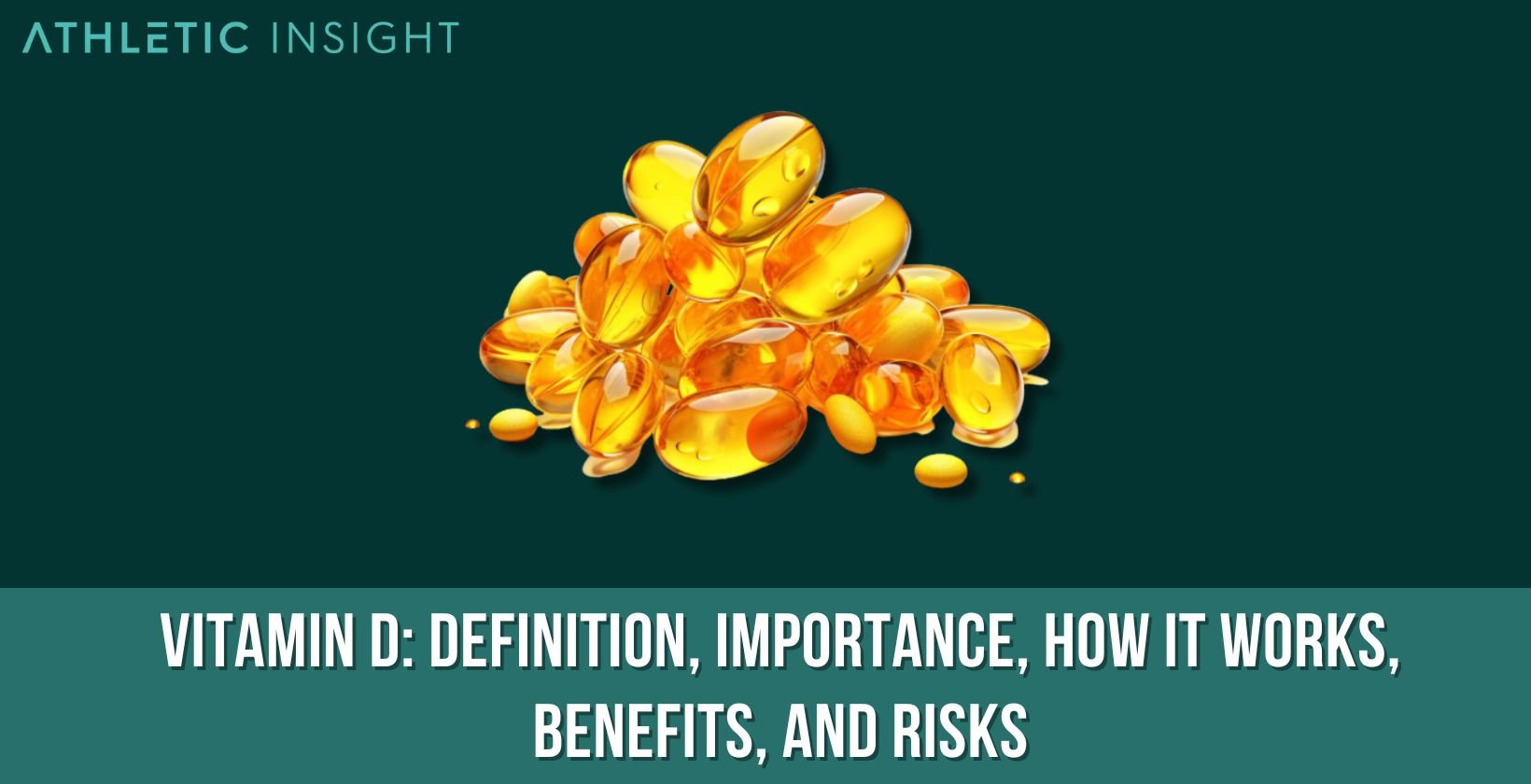The medical and health community regard Vitamin D as a vital cornerstone in the foundation of health. It’s often associated with sun exposure and bone health, but recent scientific endeavours have unearthed a vast array of roles this nutrient plays. It’s no longer just a ‘vitamin’, rather a prohormone involved in numerous physiological processes that maintain optimal health. Thus, understanding the intricate details of Vitamin D is not a mere academic pursuit but a necessity for well-being.
Recognized for its skeletal benefits, Vitamin D’s influence extends far beyond, implicating skin health, mental wellness, immune function, and more. The complexity of this nutrient calls for a comprehensive exploration of its definition, importance, mechanism of action, benefits, and potential risks.
What is Vitamin D?
Vitamin D, a fat-soluble prohormone, belongs to a group of compounds that include Vitamins D1, D2, and D3. Unlike most vitamins that need to be consumed in the diet, Vitamin D can be synthesized in the skin upon exposure to sunlight. This unique attribute has earned it the moniker, the ‘sunshine vitamin’.

Among the family of D vitamins, the ones that carry significant relevance for human health are Vitamin D2, Ergocalciferol, and Vitamin D3, Cholecalciferol. The body’s ability to manufacture Vitamin D and its presence in certain foods and supplements ensure its essentiality for an array of bodily functions.
Why is Vitamin D Important in Health?
Vitamin D has a multifaceted role in maintaining health, starting with its critical involvement in calcium metabolism and bone health. It enhances calcium absorption in the gut, facilitating the mineralization of bones and teeth. It’s deficiency, therefore, could lead to bone malformations such as osteomalacia and osteoporosis.
Vitamin D’s role doesn’t end with bones. It’s a regulatory agent for cell growth and immune function, offering a protective mechanism against infections and diseases. It’s also found to reduce inflammation, a common underlying factor in many chronic conditions. In essence, Vitamin D’s importance lies not just in its widespread effects on health but also in the adverse outcomes linked with its deficiency.
How does Vitamin D Interact with other Vitamins?
Vitamin D doesn’t function in isolation. It engages in an intricate interplay with other nutrients, notably Vitamin K, a relationship vital for optimal bone health and cardiovascular function. Vitamin D aids in the absorption of calcium, while Vitamin K ensures that the calcium is used correctly, directed towards areas like bones and teeth where it is beneficial, and away from regions like the arteries where it could cause harm.
This synergistic interaction underscores the importance of a balanced diet encompassing all nutrients. It also signals the potential danger of over-supplementing one nutrient without considering its interaction with others, potentially leading to imbalances and adverse effects.
How does Vitamin D Affect Skin Health?
Vitamin D plays a crucial role in maintaining skin health. It encourages the growth of skin cells, particularly keratinocytes, thereby contributing to a robust skin barrier. This barrier functions as the body’s first line of defense against pathogens and environmental assaults, and it plays a crucial role in preventing water loss, maintaining skin hydration.
Vitamin D is associated with wound healing and is known to alleviate symptoms of skin conditions such as psoriasis and vitiligo. This nutrient’s impact on skin health provides a broader perspective on its systemic role beyond skeletal health.
What are different types of Vitamin D?
Vitamin D is an umbrella term that encompasses several compounds. The two forms of paramount importance for human health are Vitamin D2, also known as ergocalciferol, and Vitamin D3 or cholecalciferol.
While they perform similar functions in the body, the two forms differ in their sources and potency. Vitamin D2 primarily comes from plant sources and fortified foods, while Vitamin D3 is synthesized in the skin through sun exposure and can also be found in animal-based foods.

1. Vitamin D2 (Ergocalciferol)
Vitamin D2 or Ergocalciferol is a form of Vitamin D that is primarily obtained from plant sources. Some mushrooms, when exposed to ultraviolet light, produce Vitamin D2. It is also found in fortified foods like bread and cereals, making it an essential source of this nutrient for vegetarians and vegans.
The benefits of Vitamin D2 are akin to those of Vitamin D3. It aids in the absorption of calcium, promotes bone health, and plays a role in immune function. However, it is generally considered less potent than Vitamin D3, as it is not as effective in raising and maintaining the body’s Vitamin D levels.
2. Vitamin D3 (Cholecalciferol)
Vitamin D3, also known as cholecalciferol, is another essential form of Vitamin D. It’s produced in the skin when exposed to sunlight, specifically ultraviolet B radiation. In terms of dietary sources, it is found in animal products like fatty fish, liver, and egg yolks.
Vitamin D3 is crucial for its role in maintaining bone health, immune function, and reducing inflammation. It is generally considered more potent than Vitamin D2 in raising the body’s Vitamin D levels, making it an often-preferred form for supplementation.
Is Vitamin D3 the Same as Vitamin D?
Vitamin D3 is a type of Vitamin D but not the entirety of it. The term “Vitamin D” is a collective name for a group of fat-soluble compounds, of which D3 is one. Hence, while all D3 is Vitamin D, not all Vitamin D is D3. It’s worth noting that both Vitamin D2 and D3 are significant for human health, although they differ in their sources and efficacy in the body.
Understanding this difference is essential when choosing dietary sources or supplements to meet Vitamin D requirements. While both forms can help maintain healthy Vitamin D levels, some studies suggest that Vitamin D3 may be more efficient at improving overall Vitamin D status.
How does Vitamin D work?
Vitamin D operates through an intricate mechanism, underlining its status as a prohormone rather than a mere vitamin. When the skin is exposed to sunlight, specifically UVB radiation, it produces Vitamin D3. This Vitamin D3 is carried to the liver, where it’s converted into 25-hydroxyvitamin D, often measured in the blood as an indicator of Vitamin D status.
However, it’s the next transformation that confers Vitamin D its biological activity. The kidneys convert 25-hydroxyvitamin D into its active form, calcitriol or 1,25-dihydroxyvitamin D. This compound binds to Vitamin D receptors found in numerous cells throughout the body, influencing a myriad of biological processes from gene expression to cellular function, showcasing the hormone-like actions of Vitamin D.
What is the recommended intake of Vitamin D?
The recommended dietary allowance (RDA) for Vitamin D varies based on age, sex, and life stage. According to the Institute of Medicine, the RDA for most adults (ages 18-70) is 600 international units (IU) per day, and for those above 70, it’s 800 IU per day. Pregnant and lactating women should also aim for 600 IU daily.
It’s important to note that these are general recommendations, and individual requirements may vary based on health status, lifestyle, and geographic location. A healthcare professional can provide personalized guidance on optimal Vitamin D intake.
Who should take Vitamin D?
Vitamin D is essential for all, given its vast array of health benefits. However, certain groups may be more susceptible to Vitamin D deficiency and might therefore consider supplementation. These include older adults, people with limited sun exposure, those with darker skin tones, individuals with conditions affecting fat absorption, and those who are obese or who have undergone gastric bypass surgery.
Individuals following certain dietary patterns, such as a strict vegan diet, may also struggle to meet their Vitamin D needs from food alone. In these cases, supplementation can be an effective way to maintain adequate Vitamin D levels.
When to take Vitamin D?
As Vitamin D is fat-soluble, it’s best absorbed when taken with a meal containing healthy fats. Thus, the timing can be aligned with meal schedules. However, the body can store and utilize Vitamin D over time, so the time of day is less crucial than regular and consistent intake.
As for seasonal variations, increased intake or supplementation might be necessary in fall and winter months, when sunlight exposure is limited, especially for those living far from the equator. Regular monitoring of Vitamin D status can help tailor intake to individual needs throughout the year.
Should you take Vitamin D everyday?
Consistent intake of Vitamin D is essential given its role in various body functions. However, whether it should be taken every day depends on individual needs and sources. If one gets ample sun exposure and consumes a diet rich in Vitamin D, additional daily supplementation may not be necessary.
Many people struggle to get adequate Vitamin D from sunlight and food alone. For them, a daily supplement may be beneficial. It’s recommended to consult a healthcare professional for personalized advice on Vitamin D supplementation.
How is Vitamin D Utilized in Diet?
Vitamin D is found in a limited number of foods, with the richest sources being fatty fish, fish liver oils, and egg yolks. When it comes to a proper diet plan, many foods are fortified with Vitamin D, including milk, orange juice, and cereals, which can help boost dietary intake. Some mushrooms exposed to UV light also contain Vitamin D2.
When consumed, Vitamin D is absorbed in the intestines along with dietary fat. It’s then stored in body fat tissues and released for use when needed. This ability to be stored and used over time allows for flexibility in dietary intake, although consistent consumption of Vitamin D-rich foods is beneficial for maintaining optimal levels.
Does Vitamin D support weight loss?
Research suggests a potential relationship between Vitamin D status and body weight. Some studies have found that adequate Vitamin D levels may enhance weight loss and reduce body fat. The proposed mechanism involves Vitamin D’s influence on fat cells and its ability to regulate levels of parathyroid hormone, which could indirectly impact body weight.
However, it’s essential to understand that Vitamin D alone is not a magic bullet for weight loss. It should be considered a part of a holistic approach to weight management that includes balanced nutrition and regular physical activity. More research is needed to fully understand the extent of Vitamin D’s role in weight management.
What are the sources of Vitamin D?
Vitamin D is unique as it can be obtained from three distinct sources – sunlight, diet, and supplements. Exposure to sunlight triggers the synthesis of Vitamin D3 in the skin. Dietary sources include both naturally occurring and fortified foods. Some natural sources are fatty fish like salmon and mackerel, fish liver oils, and egg yolks. Certain mushrooms produce Vitamin D2 when exposed to UV light. Fortified foods, such as dairy products, plant-based milks, orange juice, and cereals, provide additional dietary Vitamin D.
Supplements are another source and can be beneficial for those with limited sun exposure or dietary intake. The two forms of Vitamin D found in supplements are D2 and D3, with some evidence suggesting D3 may be more effective in raising Vitamin D levels.
Is the Sun a good source of Vitamin D?
Yes, sunlight is a vital source of Vitamin D. The UVB rays from sunlight interact with a form of cholesterol in the skin to produce Vitamin D3. For most people, a few minutes of sun exposure on the face, hands, and arms each day during the summer months is sufficient to meet their Vitamin D needs.

However, factors such as latitude, altitude, time of year, time of day, weather, age, skin pigmentation, and sunscreen use can influence the body’s Vitamin D production. Therefore, it’s recommended that people also consume adequate Vitamin D from dietary sources or consider supplementation, especially in the fall and winter months when sun exposure is limited.
Are Vitamin D Supplements a good source?
Yes, Vitamin D supplements can be a beneficial source, especially for those who have difficulty obtaining sufficient Vitamin D from sunlight or diet. They are available in two forms – D2 (ergocalciferol) and D3 (cholecalciferol). Both types can help improve Vitamin D status, but some evidence suggests that D3 may be more effective at raising and maintaining Vitamin D levels.
However, it’s important to consult a healthcare professional before starting supplementation, as excessive intake can lead to Vitamin D toxicity. Personalized advice based on individual health status and needs can ensure safe and effective use of Vitamin D supplements.
What types of Diets require Vitamin D?
Given Vitamin D’s role in health, all types of diets should aim to include adequate amounts. However, some diets may pose challenges for meeting Vitamin D needs. These include vegan diets, as most natural sources of Vitamin D are animal-derived, and diets high in unsaturated fats, as fat absorption is essential for Vitamin D uptake.
For vegan or plant-based diets, fortified foods and sun exposure become particularly important. For diets high in unsaturated fats, individuals may need to monitor their Vitamin D status and consider supplementation if necessary.
How much sunlight is needed to meet Vitamin D demands for Dairy-free Diets?
Meeting Vitamin D needs through sunlight alone can be challenging, particularly for those following dairy-free diets who may have limited dietary sources. The amount of sunlight needed depends on several factors, including geographical location, time of year, time of day, skin pigmentation, age, and use of sunscreen.
As a general guideline, about 10 to 30 minutes of midday sun exposure on the face, arms, and legs twice a week can help achieve sufficient Vitamin D synthesis. However, because of the risk of skin damage and cancer from sun exposure, it’s recommended to get Vitamin D from dietary sources or supplements and to use sun protection during prolonged sun exposure.
What are sources of Vitamin D that can be utilized into a Vegan Diet?
While the majority of Vitamin D sources are animal-derived, several options can be incorporated into a vegan diet. Fortified foods are a significant source, with options including plant-based milks, breakfast cereals, and orange juice. Some types of mushrooms, such as maitake and chanterelle, contain Vitamin D2 when exposed to UV light. Supplements, particularly those containing Vitamin D2 or lichen-derived Vitamin D3, can also be a useful tool for vegans to meet their Vitamin D needs.
Sensible sun exposure can also help vegans synthesize Vitamin D3 in their skin. It’s essential, however, to balance this with the risk of skin damage and skin cancer from too much sun exposure.
How does a Low-Fat Diet impact the body’s ability to absorb and utilize Vitamin D?
A low-fat diet can impact the body’s ability to absorb Vitamin D, given that it’s a fat-soluble vitamin. This means that it needs dietary fat to be absorbed in the intestines. Studies have shown that consuming Vitamin D with fat can significantly enhance its absorption.
As a result, individuals on a low-fat diet may potentially have reduced Vitamin D absorption. To counter this, they might need to pay extra attention to their Vitamin D intake and consider foods high in healthy fats when consuming Vitamin D sources or supplements. Regular monitoring of Vitamin D status can provide a clearer picture of whether current intake meets individual needs.
What are the Health Benefits of Vitamin D?
Vitamin D plays a pivotal role in numerous aspects of health. At its core, it aids in the absorption of calcium and phosphorus, crucial for bone and dental health. It also plays a part in immune function, with some research suggesting a role in preventing autoimmune diseases and infections.
Further, Vitamin D may have protective effects against certain types of cancer, including colorectal, breast, and prostate cancers. It has also been linked to cardiovascular health, with adequate levels associated with a lower risk of hypertension and heart disease. Emerging research also points to potential benefits in metabolic health, mental health, and overall mortality.
Can Vitamin D supplementation improve Athletic Performance?
Research on Vitamin D and athletic performance has yielded mixed results. Some studies suggest that Vitamin D might enhance athletic performance in individuals with low Vitamin D status by improving muscle function, reducing inflammation, and supporting immune health. However, it’s unclear whether supplementation would provide additional benefits for athletes with adequate Vitamin D levels.
As such, while ensuring sufficient Vitamin D intake is part of overall good nutrition for athletes, relying on supplementation to enhance performance is not currently supported by strong scientific evidence. Athletes should consult with a sports dietitian or other qualified healthcare professional to individualize their nutritional strategies for optimal performance.
What are the Health Risks of Vitamin D?
While Vitamin D is essential for overall health, both deficiency and excess can pose health risks. Insufficient Vitamin D levels can lead to rickets in children, a condition characterized by soft, weak bones. In adults, it can lead to osteomalacia, resulting in bone pain and muscle weakness. Other potential risks of Vitamin D deficiency include increased susceptibility to infections, autoimmune diseases, certain types of cancer, cardiovascular disease, and mental health conditions.
Conversely, too much Vitamin D, typically from excessive supplementation, can lead to hypercalcemia, a condition characterized by too much calcium in the blood. Symptoms include nausea, vomiting, muscle weakness, frequent urination, bone pain, and kidney problems. It’s crucial to understand that toxicity typically occurs from long-term intake of very high doses, far above the recommended dietary allowance, and not from sun exposure or food sources.
What are the symptoms of Vitamin D deficiency?
Vitamin D deficiency can often be asymptomatic in the early stages, making it challenging to detect. When symptoms do occur, they may include fatigue, bone pain, muscle weakness, mood changes, and frequent infections. In severe or prolonged cases, deficiency in children can lead to rickets, while in adults, it can result in osteomalacia.
It’s important to note that these symptoms can be associated with various health conditions, and a deficiency diagnosis should be confirmed through a blood test. If Vitamin D deficiency is suspected, it’s important to consult with a healthcare provider for an accurate diagnosis and appropriate treatment.
Can Vitamin D deficiency cause depression?
Emerging research suggests a potential link between Vitamin D deficiency and depression. Vitamin D receptors are found in various areas of the brain, including those involved in the regulation of mood. Low Vitamin D levels have been observed in individuals with depression, and some studies suggest that supplementation may improve depressive symptoms.
However, the relationship between Vitamin D and mood disorders is complex and not fully understood. While ensuring adequate Vitamin D intake is part of overall good mental health, it should not replace other treatments for depression. Individuals experiencing depressive symptoms should seek advice from a mental health professional.
Overall, Vitamin D, commonly known as the “sunshine vitamin,” is a vital nutrient with wide-ranging roles in human health. Its impact extends from bone health to immune function and beyond. Ensuring adequate Vitamin D intake, through a combination of sun exposure, diet, and potentially supplementation, is key for maintaining good health.
However, individual needs can vary, and it’s important to consider personal factors, including age, skin type, geographical location, dietary patterns, and overall health status. If Vitamin D deficiency is suspected, seek advice from a healthcare professional for an accurate diagnosis and personalized treatment plan.



